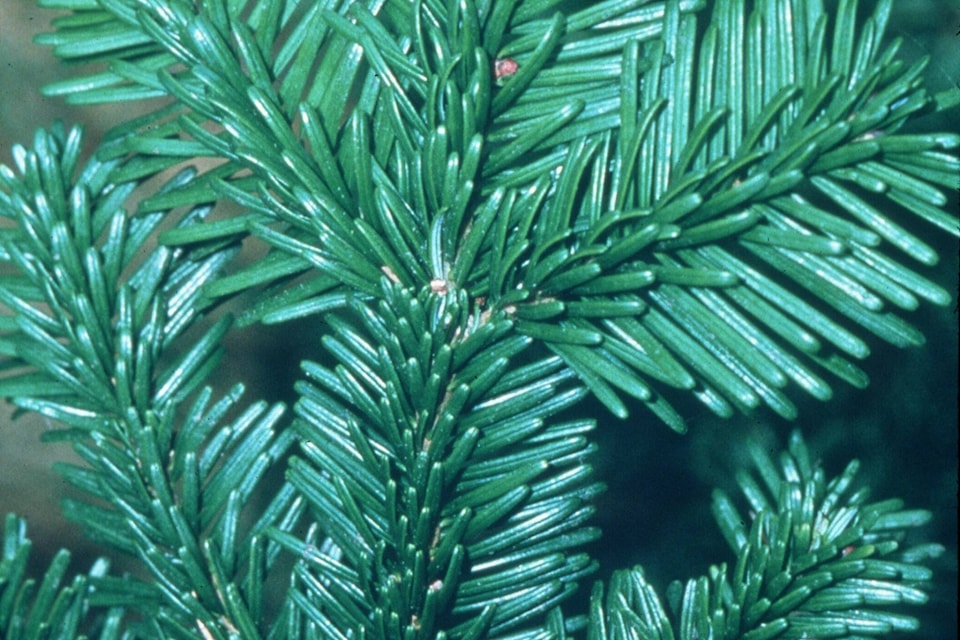Why don’t the tree branches break with a heavy snow load in the winter? Branches of hardwoods can often break when we have a late snowfall, especially if leaves are already on the trees. However evergreen conifers can withstand heavy snow in various ways.
Where snow accumulations tend to be large, the overall cone-shape of the evergreen conifers and the long, narrow needles shed snow easily. In addition, the branches are flexible, bending readily rather than breaking, and tend to swoop downward so that snow slides off them easily.
In subalpine and alpine areas, a good cover of snow acts as a protection for the trees from the strong icy winds, especially protecting the sensitive growing tips. Frost damage of growing tips of planted trees in exposed clear-cuts can be a big problem.
In areas where the winter weather is not so severe, the snow can be very wet and heavy, and trees must be able to cope with large accumulations. True firs, especially Grand and Amabilis firs have flatter needles that are arranged in rows on either side and on top pointing toward the tip of the branches so they present a flat, shiny surface that snow can readily slide off. But sometimes entire tree crowns snap off in heavy, wet snow (especially in top-heavy spruce and lodgepole pine).
We tend to think of tree bark as tissue that protects the inner living tissues from damage, but often the bark is really protecting these tissues from the heat of the sun. In colder climates, if the bark warms up during the day it may not be thick enough to prevent the inner tissues from getting too warm. Then there is a danger that if the temperature drops rapidly at night, the inner tissues cannot adjust fast enough, and they freeze suddenly causing the trees to crack.
Different tree species have different tolerances for these killing temperatures and to a certain extent that limits their distribution.
For comparison, in the hotter, dry interior of south-central BC, the thicker bark of Ponderosa pine provides good protection from cold temperatures as well as from dehydration and fire damage to living tissues in the summer.
Totally unrelated but worth knowing about…. if you travel through Ponderosa pine country, do take time to stop, stick your nose into a fissure of the bark of an older Ponderosa pine tree and inhale. You are in for a vanilla treat.
